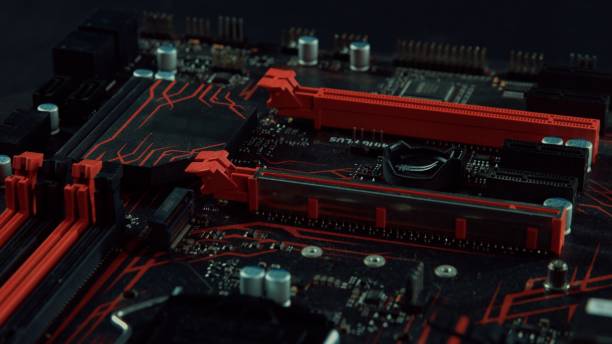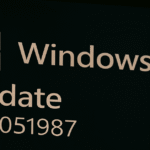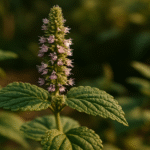Creating viral content isn’t just about luck anymore. In today’s fast-paced digital world, the ability to produce compelling, shareable videos quickly is a superpower — especially for creators, marketers, and businesses looking to grow online. But with the sheer volume of content flooding platforms like TikTok, Instagram Reels, and YouTube Shorts, standing out means more than just having a good idea. You need speed, quality, and creativity all working together.
Enter AI-driven content creation. Thanks to modern advancements in artificial intelligence, you can now make viral-ready short clips in a fraction of the time it once took. Whether you’re a solo creator or part of a marketing team, an AI short video generator can give you the edge needed to produce attention-grabbing content — fast.
Why Short Videos Go Viral
Short videos are inherently addictive. Platforms have optimized their algorithms to favor content that keeps users scrolling. These clips are easy to consume, highly engaging, and perfect for mobile viewing. As a result, creators are shifting toward punchy, snackable videos that deliver impact in under a minute.
Unlike traditional long-form content, short videos thrive on trends, quick humor, powerful visuals, and emotional hooks. The challenge is turning an idea into a captivating clip before the trend passes — and that’s where AI tools make all the difference.
The Role of an AI Short Video Generator
Using an AI short video generator allows creators to automate the most time-consuming parts of video production. These tools can analyze scripts, generate visuals, synchronize audio, and even suggest improvements to enhance engagement — all within minutes.
This isn’t just about saving time. It’s about unlocking the ability to test more ideas, iterate faster, and capitalize on viral moments before they cool off. Whether you’re remixing old content or crafting a new story, AI helps you scale your video output without compromising on creativity or quality.
What AI Brings to the Table
AI isn’t just a fancy add-on; it fundamentally changes how videos are made. Here are some of the top ways AI contributes to fast viral video production:
- Script to Video: AI can take written content (like blog posts, tweets, or captions) and turn it into engaging video scripts and scenes.
- Auto-Cuts & Transitions: It can detect the best parts of a longer video and automatically create clips that are more likely to perform well on social platforms.
- Voiceovers & Captions: With natural-sounding voiceovers and accurate subtitles, your clips become more accessible and engaging.
- Trend Optimization: Some AI tools can identify trending topics or formats and help you match your video style to what’s working now.
Planning Your Viral Clip: The Foundation Matters
Before jumping into production, every viral clip starts with a simple but powerful concept. What emotion are you targeting — laughter, surprise, inspiration? What story are you telling? What’s the hook that will keep someone watching past the first three seconds?
Understand Your Audience
Viral content is about resonance. The more closely your video aligns with what your audience cares about, the better your chances of getting shared. Use insights from your comments, DMs, and analytics to figure out what kind of content gets traction.
Choose a Format That Works
Certain video formats naturally perform better on specific platforms. For example:
- TikTok thrives on trends, duets, and punchy skits.
- Instagram Reels favors aesthetic visuals, tutorials, and motivational snippets.
- YouTube Shorts works well for story-driven content or comedy.
With your audience and format in mind, you’re ready to begin producing at scale using AI.
Producing Your Clip with AI
Here’s a step-by-step breakdown of how to produce a viral-ready short clip using AI-powered video tools.
Step 1: Prepare Your Core Idea
Start with a tight concept. You don’t need a script as much as you need a hook — a strong opening that grabs attention. Think shocking fact, unexpected twist, bold statement, or relatable moment. Write it down in one sentence.
Step 2: Convert to Visuals and Audio
Using a video creator app with AI features, input your hook and supporting points. The tool can help you choose the right footage, animations, or imagery that visually supports your message. Many platforms allow for automatic voiceovers, text overlays, and smart scene selection to keep things dynamic.
Step 3: Customize and Polish
While AI does the heavy lifting, it’s your creative touch that adds personality. Customize fonts, choose music, fine-tune the pacing, and make sure the transitions match the energy of your idea. Focus on these details:
- Open strong: Your first 1-2 seconds should immediately spark curiosity.
- Keep it tight: Trim any unnecessary content. Every second should add value.
- End with impact: A memorable ending or call-to-action makes your video stick.
Step 4: Optimize for Platforms
AI tools can also help you resize and format your clip for different platforms. For example, square for Instagram, vertical for TikTok, or horizontal for YouTube. Don’t just cross-post — tailor each version slightly for the platform’s audience and vibe.
Tips for Going Viral with AI-Generated Clips
While AI can accelerate your content pipeline, you still need a strategy to maximize your chances of going viral.
1. Post Consistently
The more content you put out, the higher the odds of something catching fire. Use AI to produce batches of videos in one go so you can post regularly without burning out.
2. Follow (and Ride) Trends
Watch for emerging trends and react quickly. AI can help you repackage existing content in trendy formats or remix viral sound bites with your own twist.
3. Track Performance and Iterate
Use analytics to monitor how your AI-generated clips perform. Pay attention to:
- Watch time
- Click-through rate
- Shares and comments
Use this data to refine your next batch of videos. AI helps you make more content — but your insight helps you make better content.
4. Hook, Story, Payoff
Every viral video has three parts:
- Hook: Grabs attention instantly
- Story: Keeps the viewer engaged
- Payoff: Delivers a twist, lesson, or laugh that makes it worth watching (and sharing)
AI tools can help structure your clip with this flow in mind.
Repurposing Long-Form Content with AI
Have a podcast, interview, or long video that performed well? AI can help you extract viral clips from existing content. It analyzes what parts of a video are most engaging and suggests highlight segments that can be re-edited into shorts.
This is especially powerful for creators and brands with a backlog of content — turning one piece of media into dozens of short clips that can feed your content calendar for weeks.
Speed and Agility Are Everything
In a viral landscape, being fast often matters more than being perfect. AI tools give you the agility to test, learn, and iterate — all at the speed of the internet. That’s how you increase your chances of catching the algorithm’s eye and riding the wave of shareability.
The Future of Short Video Creation
As AI continues to evolve, we can expect even more intelligent features: tone-aware editing, real-time trend suggestions, and automatic A/B testing of video variants. This doesn’t mean creators will be replaced — it means they’ll be empowered to do more with less.
Short video content will only keep growing, and those who learn to harness AI early will be the ones leading the trends, not chasing them.
Conclusion
Viral videos don’t happen by accident anymore — they happen by design. With the help of an AI short video generator, you can transform your ideas into compelling clips at lightning speed. It’s not about removing the human touch — it’s about amplifying it with smart technology.
So whether you’re an influencer trying to grow your following, a brand looking to break through the noise, or a content creator building a loyal audience, AI is the secret weapon to make short, viral-ready clips — fast.







